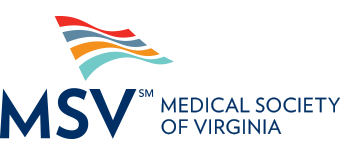Physician Shortage: Solutions to Protect Physicians, Patients, and Healthcare Delivery
Within 12 years, the U.S. faces a physician shortage of between 37,800 and 124,000 physicians — which balloons to between 102,400 and 180,400 if underserved populations had healthcare-use patterns similar to those with fewer access barriers.
These shortage projections by the Association of American Medical Colleges include between 17,800 and 48,000 primary care physicians, and between 21,000 and 77,100 non-primary care physicians.
Unfortunately, the shortage is already very apparent. Despite the fact that the number of U.S. physicians is on the rise, there aren’t enough physicians today to meet needs. Physician numbers just aren’t growing fast enough to keep up with population growth and the healthcare demands of an aging population — the top two factors driving the physician shortage. The U.S. Health Resources and Services Administration specifically reports significant shortages in both primary care and psychiatry today, as well as general surgeons in rural communities.
The COVID pandemic and physician burnout has only exacerbated this shortage. According to the AMA, one in five physicians say it is likely they will leave their current practice within two years. Also, about one in three doctors and other health professionals say they intend to reduce work hours in the next 12 months
Unless results-focused solutions are put in place to address this crisis, these shortages will drastically change the face of healthcare in our country. One thing is clear: It’s more important than ever before to support solutions to protect physicians and healthcare delivery in all communities in our nation, large and small, urban and rural, and everything in between.
Impact of the Physician Shortage
For patients, the primary impacts of a physician shortage are access to and quality of care. The consequences of a physician shortage for patients include:
- Reduced routine care visits
- Reduced continuity of care
- Reduced doctor-patient interaction time
- Reduced doctor-patient relationships
- Reduced preventative care and screenings
- Increased wait times before consultations
- Increased consultation prices
- Increased frustration and dissatisfaction
In addition, because the supply of primary care physicians is linked to better health outcomes, a shortage in this particular specialty puts the health of our communities at risk, affecting overall health, life expectancy, and mortality from all causes.
There is also a toll for physicians. Patient care and access issues contribute to increasing the stress levels of physicians, who are focused on providing the best care possible for their patients and their communities. In addition to these critical care and access concerns, physicians also face increased workloads in a shortage — further exacerbating their stress levels.
A final issue that doesn’t often get the spotlight: economic impact. Physicians not only contribute to the health of their communities by caring for patients, but they also contribute to their community’s economic health. Physicians rent and buy office space. They create jobs by hiring roles within their practices. They support job creation in the community by directly buying goods and services. And they keep the community healthier, so more people are able to participate in the workforce. When physician practices disappear, so do their economic value and contributions.
Solutions for the Physician Shortage
There is no single solution for the physician shortage. Addressing the shortage will require a multi-faceted approach. Let’s highlight a few key solutions here.
In line behind the top two factors driving the physician shortage, population growth and an aging population, is the aging physician population. In the next five years, 35 percent of our physician workforce will be of retirement age. Burnout is also prompting many to consider early retirement, which would further amplify the shortage.
Addressing physician burnout is an issue of high importance, not just because of the shortage, but because of protecting physicians’ well-being. Luckily more attention is now being paid to physician burnout and mental health. As it relates to the shortage, however, addressing burnout will prevent more physicians from leaving their practices or reducing their hours — two repercussions of burnout that have a direct impact on patient access to care.
Healthcare reform is another focus area to address the physician shortage. One example on the table is improving the prior authorization process to both reduce administrative burden and improve the continuity and timeliness of patient care. Another example is permanently updating telehealth regulations to increase access and reimbursement options beyond temporary adjustments that were made during the pandemic. Both of these items are something the Medical Society of Virginia is continuously advocating and working on to support physicians and patients.
Technology is another piece of the solution puzzle, including improving access to and use of telehealth, electronic referrals and consults, and asynchronous patient care and monitoring. On the physician side of the technology solution, training for new and current physicians is essential to adopting and adapting to increased use of technology in daily practice. Current physicians would need to embrace and be supported in adjusting to changes in patient interaction and care delivery. The short-term training and implementation cycle would have a direct impact on improving long-term patient access to care and potentially addressing burnout factors as well.
There are many additional options being discussed and evaluated to address the shortage, including among them: reducing costs of medical education and related financial burdens, initiating Medicaid reform, improving distribution of physicians to rural communities via incentives and other strategies, increasing physician recruitment, reducing immigration barriers for foreign-born physicians, and encouraging more medical students to consider primary care.
To address and resolve the physician shortage, it’s imperative to support solutions to protect physicians and healthcare delivery in our communities. The need is urgent, the solutions are many, and the timing is now.
How are you contributing to being part of the solution, and in what ways can the Medical Society of Virginia support you in your efforts? Let us know by emailing me at [email protected].
Jenny Young
Associate VP of Membership and Engagement
The Medical Society of Virginia
The information contained in this article is for educational purposes only and does not constitute health care advice.


